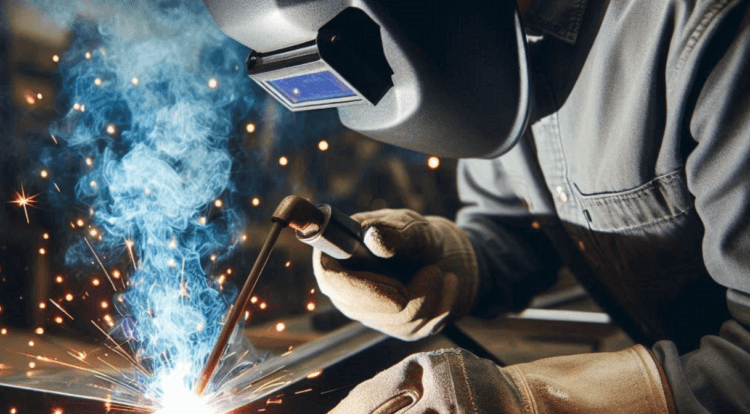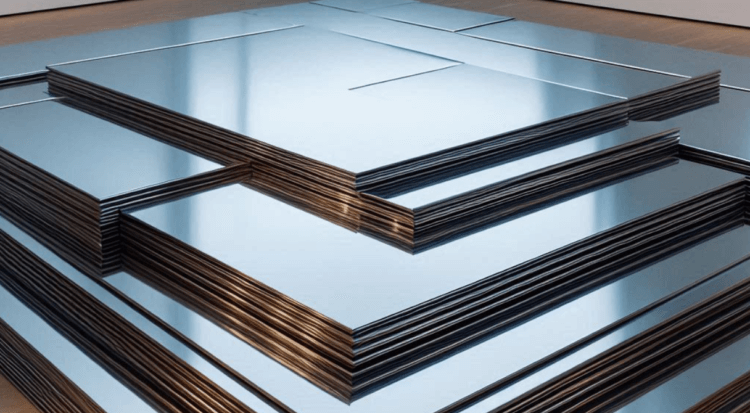Under terrestrial conditions, under the influence of oxygen, metal oxidizes, resulting in rusting. Despite the fact that people have learned to deal with this problem, it still exists and, for example, is well known to many car owners, since the bodies of some cars quickly rot. One would assume that there should be no problems with metal products in space, since there is no oxidizing agent. However, scientists have encountered other problems that do not exist on Earth. Moreover, they can have serious consequences for space missions.

In space, metals behave differently than on Earth
What is cold welding
Ever since people mastered the melting of metals, the need arose to connect various metal parts with each other. For these purposes, a variety of technologies were used, but welding turned out to be the most reliable and practical solution. This procedure involves the fusion of two metals as a result of exposure to high temperatures.
In the 40s of the last century, scientists discovered that metal welding can be carried out even without high temperatures and melting. This joining method became known as “cold welding”. To join metals in this way, certain conditions are necessary: the presence of a vacuum, the surfaces to be welded must be flat and clean.

Welding of metals can be not only hot, but also cold (without melting of the joined surfaces)
Why is this happening? It's actually very simple – when two metal surfaces touch each other in a vacuum, there is nothing between them. This means that the atoms on the two metal surfaces begin to touch each other and interact in the same way as they interact with their neighboring atoms located deeper in the metal. Simply put, they communicate with each other.
Cold welding allows you to connect not only the same type of metals, but also different types of metals. True, in practice it is much more difficult to use than it looks in theory. That is, it is impossible to simply place two parts in an airless space and connect them so that they are welded to each other. To carry out this process in terrestrial conditions, it is necessary to perfectly clean the surfaces and provide a certain pressure.
However, at the nanoscale, cold welding is quite easy. For example, if you take two separate pieces of gold nanowire and connect them, they will weld to each other. Moreover, the connection will be of high quality – it will be difficult to believe that these were once two separate parts of wire made of the same metal. Therefore, cold welding is often used when joining tiny elements.

In space, steel sheets would weld to each other on their own< /p>
What happens to metal in space
As you probably already guessed, the problem that scientists have encountered in space is cold welding. Any metal-to-metal contacts on a spacecraft are at high risk of cold welding. Therefore, it has to be taken into account by engineers designing spacecraft.
Cold welding can destroy components such as HDRMs (hold and release mechanisms), multi-strand wires, mechanical end stops, gear teeth, bearings, and many other components. Moreover, there have been incidents caused by this process in space. For example, in 1991, the Galileo spacecraft, which participated in the Jupiter mission, failed to deploy a high-gain antenna. According to the European Space Agency, when folded, its ribs touched each other, resulting in them welding together in space.
The mission did not fail, however, since the spacecraft had another antenna that did not have such problems. But without it, the failure of such a unit would have meant the end of a vital mission to explore the solar system.

«Galileo» could not open the antennas due to cold welding. Image source: wikimedia.org
In practice, potential problems associated with cold welding are usually discovered late in the development of spacecraft during the first tests in a vacuum. This significantly increases the cost and effort to fix the problem.
Could cold welding interfere with space travel
Currently, other than the Galileo spacecraft antenna incident, no serious problems associated with cold welding have yet arisen in space. However, they could theoretically occur during long-term space flights. For example, welding two elements can occur as a result of damage to the coating, which prevents the two metal elements from touching each other.
Don't forget to subscribe to our Zen and Telegram channels so you don't miss the most interesting and incredible scientific discoveries!
But, in fairness, we note that cold welding is currently far from the most serious problem interfering with long-term space flights. The most important thing is that the human body is not yet ready for them. For example, not so long ago scientists discovered that in zero gravity, blood is destroyed and DNA quickly mutates. Solving problems that arise with the human body is much more difficult than with metal mechanisms.